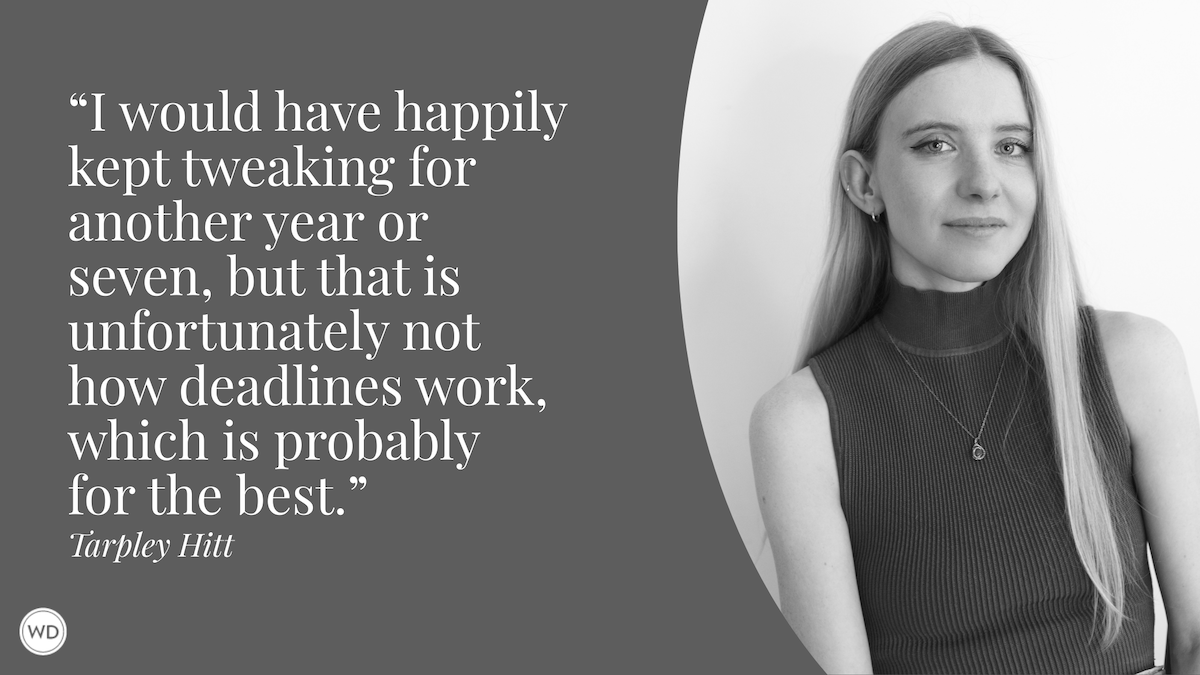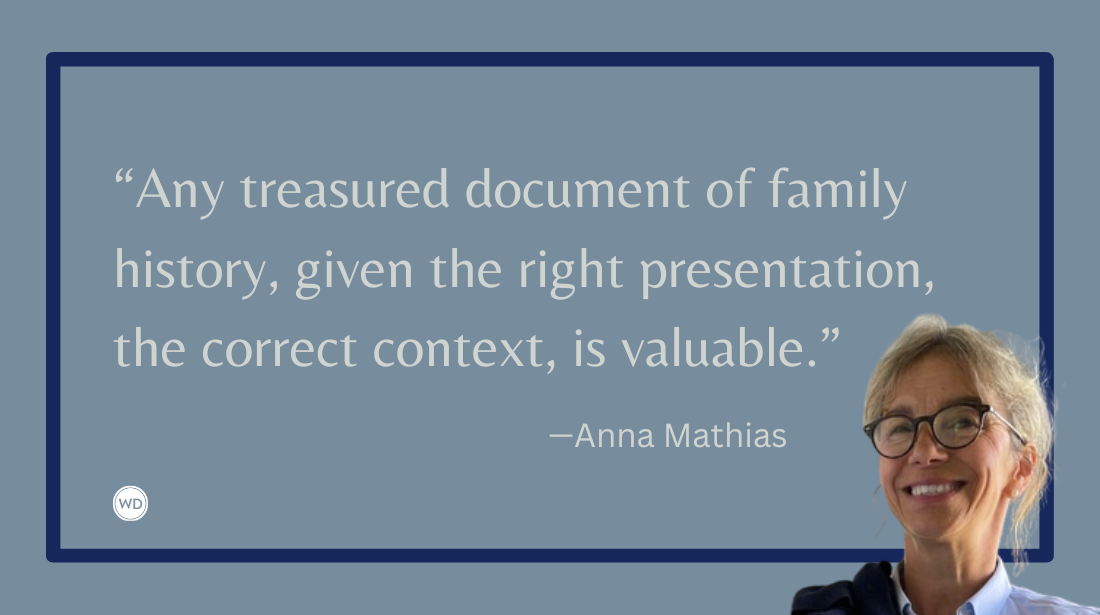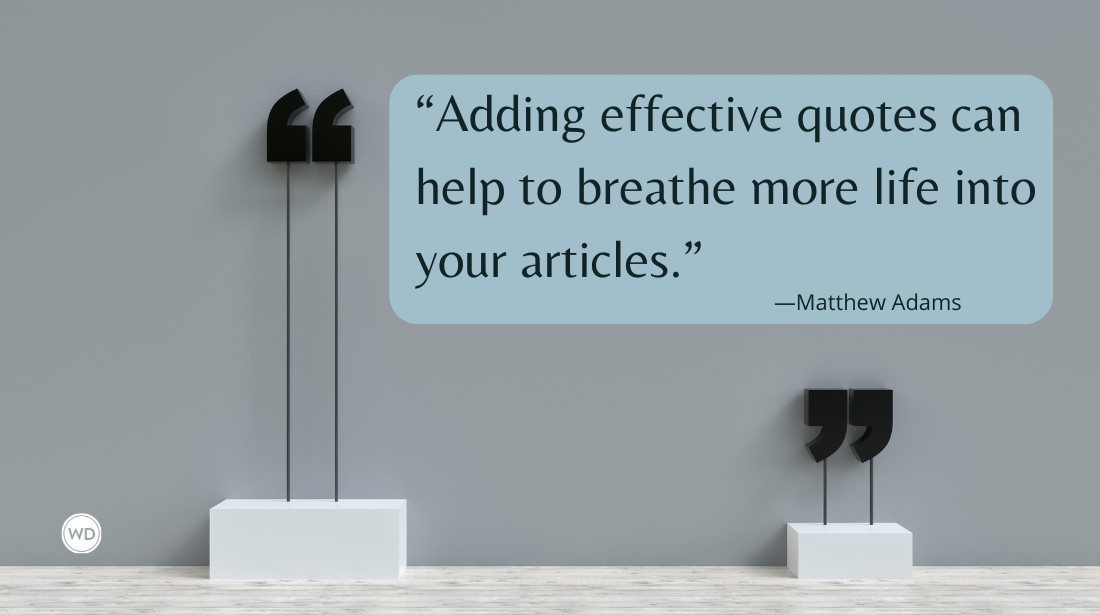Blank Pages, Bound Books
National Book Award finalist Beth Kephart shares her love of blank books, including her process of creating them for others to use for their writing.
Because, in the beginning, it is always blank. Just a page. Just a haunt. Just a promise. It is not yet anything. It could be everything. A blank page is an invitation and a question.
“The pages are still blank, but there is a miraculous feeling of the words being there, written in invisible ink and clamoring to become invisible,” Vladimir Nabokov said, seductively.
“You must not come lightly to the blank page,” Stephen King said, cautioningly.
When I was not yet a teen, I was given a blank journal—crisp white interior pages, black naugahyde covers. I was terrified. What was I to do with this? A sketch? A story? A list? A pen? A pencil? A brush? I circled the thing for a couple of days. Finally I decided: I’d turn all the naked white pages into color, paint every single one with a watery mix of hues. By the time I was done the journal was pure bloat, its signatures buckled and distorted, the whole thing looking, from the side, like so many technicolor waves trying to make their way to shore.
But now the pages weren’t (I told myself) blank and so (it seemed so obvious) I could write in them—terribly juvenile poems in inconsistently slanted script that was at least a half-inch tall. They were my jottings, nonetheless. They became my practice.
Later, after college, my trade was words. Brochure copy for architectural firms. Speeches for compensation consultants. Stories about risk and insurance. Corporate vision statements. Annual reports. Employee magazines. Patient stories. Ghosted books. And, for a side of something different, poems, short stories, and increasingly essays written in the crevices between the work that paid the bills and the mother I’d become. There wasn’t time, anymore, to be terrified, and so I gave the blank page less and less thought—just grabbed whatever pad or notebook or journal I could find and wrote with any pen.
All of that changed three years ago, when my father passed away. I was allowed to be there for his final raw hour. I had been precluded, by Covid, from spending time with him in the endless months before. It is a familiar story, but that doesn’t change how bad it feels—how the ache knells inside your bones and the regrets settle in as everlasting. Suddenly everything around me seemed blank—blank skies, blank hope, blank pages.
Now, however, I craved the quiet. I honored the paper just as it was—its distant smell of something woodsy, its knife-like edges. I could, I discovered in all the hours I wasn’t sleeping, fold it, crease it, forge a cover, stitch it, and it would be enough just as it was—the haunt alongside the promise, life in equipoise.
There are, I soon learned by way of slippery trial and error, as many ways to make a blank book as there are ways to write a story. At first my blank books were mere booklets—crisply bone-folded card stock featuring a geometric arrangement of gelli print art on the front cover and a single chain-stitched signature within. I made hundreds of these and mailed them out to my father’s friends and mine. Remember him, I said. There was room, on those blank pages.
Thin sheets of cork, I discovered, could make for fine book cover material. It was soft, it was durable, it was potentially capacious, it offered a home to multiple signatures and far more sheets of crisply folded paper. Upcycled leather—debossed by the blue ray of my husband’s laser—could be fashioned into a rugged enclosure for the signatures I’d cut one day and press the next beneath the weight of my hefty dictionaries. Khadi paper, with its lovely deckle, could be used as a frame for dried-flower art and punched, forming a cover for the rectangular 60-pound interior pages that I’d bind in with a traditional Japanese stitch. Gessoed canvas could be used to wrap a journal-stitched book; it could be decorated with the collages I had begun to make out of ephemera, exotic paper, a line or two extracted from the antique books I began to collect.
By which I mean Paul Horgan’s books. And Virginia Woolf’s. And the fairytales of the Brothers Grimm and old books for gardeners and cooks. I’d scour the pages for lines that might be interesting, encouraging, or delightfully strange, slice them out of context with my freshly screwed-in X-Acto blade, and PVC them to the cover art—a prompt of sorts, a setting of the stage for the blank pages that, inside, waited.
Waited for another.
Waited beyond my own capacity for words.
Waited not to terrify, but to appeal, suggest, seduce.
Check out Beth Kephart's My Life in Paper here:
(WD uses affiliate links)
In time I learned to wrap hard pieces of board with paper I marbled, or paper I cyanotyped, or the Hanji paper I had stained with the avocado pits or red onion skins or dandelion buds that I had (in a messy operation weeks before) collected and steamed. I practiced the Coptic stitch until it was finally easy for me, then combined that stitch with a soft French Link to make books whose bindings treated the blank paper within with the respect that it deserves.
Sometimes my endpapers were made of paper I’d fashioned by tearing up my own books and stealing flowers from my own garden. Sometimes my endpapers were gelli prints over which I had painted a chemical solution known as Solar Fast, then left in the sun to produce a richer color.
Each blank book was, and is, sui generis. Each blank book took, and still takes, hours. Each blank book contains a story or a list or a sketch that I will never write or draw, because I make these blank books for others. I send them to friends. I sell them at a local farmers market and online. I think of them as the parts of me that require no words, the parts of me that will, I’ve come to understand, be everlastingly healing.
Beth Kephart is a National Book Award finalist and award-winning author of nearly 40 books, an award-winning teacher of memoir, co-founder of Juncture workshops, and (she dares to call herself this) a book artist. Her new book is My Life in Paper: Adventures in Ephemera. More at bethkephartbooks.com and bind-arts.com.









